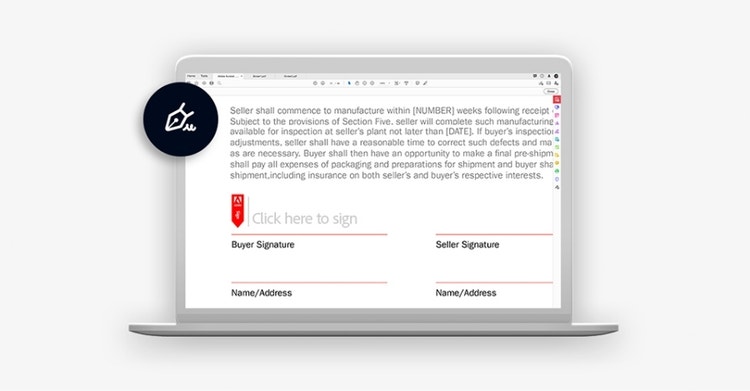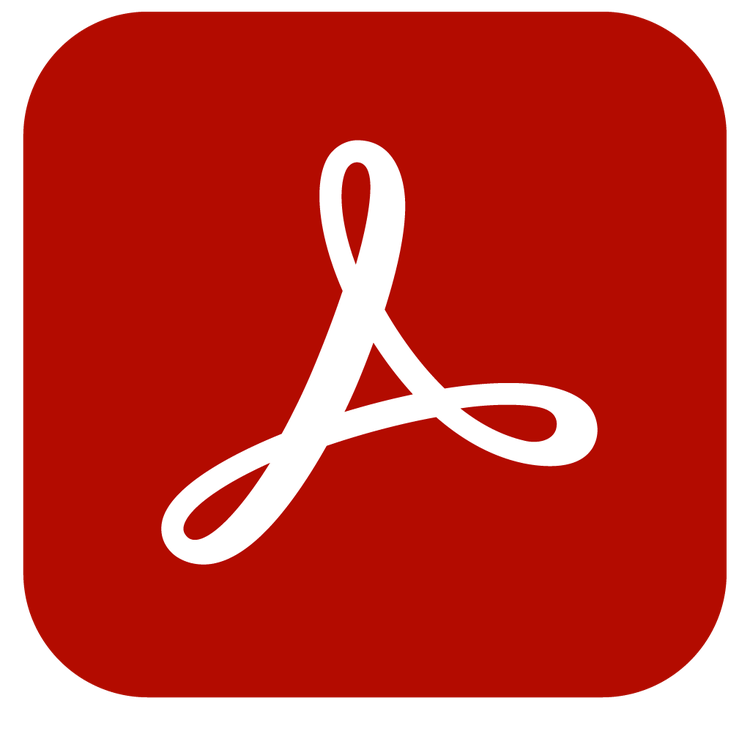ACROBAT SIGN
6 steps to a more flexible procurement process.
Procurement is how businesses acquire goods for production and sale, and a well-organized process keeps the goods and services flowing. Learn how to streamline your sourcing with digital document processes.

The quick guide to procurement partnerships.
- Procurement partnerships are one of the best ways to improve financial efficiency within a business.
- The foundation of procurement is a thoughtful and streamlined process, from services procurement to purchasing decision.
- Procurement vs. purchasing? Procurement is the whole process; purchasing goods is one of the steps.
Procurement keeps a business moving.
Procurement refers to the discovery and acquisition of the equipment, raw materials, goods, and other items that lead to the final product your business produces. Commonly, a procurement budget is broken down into three key areas:
Direct:
The direct purchases of goods and machinery for your products.
Indirect:
These are items that assist in day-to-day functioning of your business, but are not part of the product you make. Office supplies are an example.
Services:
Services include staffing, software leases, and other services that are essential to your business.
Efficient procurement with unstable supply chains.
Regardless of what kinds of products you make, from simple to complex, inefficiency and bloat can create unnecessary obstacles, making it difficult to create a procurement process flow. A poor procurement flow means goods and services aren’t arriving on time, and that interferes with customer happiness. On top of this, as supply chains become more difficult to manage and predict, understanding and managing procurement is necessary regardless of your business size.
But with the right application of skills and knowledge around procurement, you’ll be able to improve your business, forge new relationships, and leave every customer better off than when you found them. Here’s how you start.

Steps to a more perfect procurement process.
Most procurement processes follow a similar route:
- First, identify what the needed goods and services are and generate a budget for them.
- From there, compile a list of suppliers and begin contract negotiations.
- After that, create a purchase request, purchase order, or purchase requisition and send invoices to the selected vendors.
- Then the delivery takes place.
- Finally, the process begins again.
Within this procurement life cycle, there are many best practices you can adopt to improve the whole, but these six are a great place to start.

1. Go digital.
Record-keeping is an essential stage of the procurement process and forms one of the linchpins of assessment and review.
If you haven’t digitized this process already, now is the time to start. Digital record-keeping helps you regularly check in on receipts, invoices, and other ordering documents, especially if you add a new supplier.
Update your procurement strategy by moving your business to the latest in industry-standard tools for procurement. If you’re already using e-procurement tools, auditing your current use to see where things can be improved is essential. Make a concept map of the different points where decisions have to be made and where processes break down, and brainstorm ways to fix it.
2. Upgrade and optimize your documentation process.
Documentation is a necessary part of procurement — paper trails are a major part of resolving discrepancies and ensuring that your entire team is on the same page and business needs are being met.
Whether you’re cataloging transactions or itemizing preferred vendors, a document workflow that supports your objectives is key.
Adobe Acrobat Pro and Acrobat Sign integrates with the top procurement software and CLM (contract lifecycle management) tools as well as CRM (customer relationship management) apps to ensure that you have a clean workflow from start to finish. For everyday document tasks, like conversion and scanning, Acrobat has the flexibility to convert from Microsoft Office formats, PNGs, JPGs, and other images to PDF.

3. Assess and review regularly.
No process can pass muster unless you regularly assess and evaluate it for vulnerabilities and efficiency losses.
Delivery:
Are procured goods arriving when they need to and at the best price, and are you using them in a timely manner? Are there wastages or stoppages along the way?
Quality:
Keeping an eye on the final product your business produces will give you a strong sense of how procurement is fitting in. If there is a sudden change in quality of product or the procurement cycle time, ask yourself — is it because of a change in the procurement process?
Personnel:
Keeping your finger on the pulse of the people who work with the items you procure can be an excellent measure of how well the process is functioning. Listen closely to complaints about materials and processes — they offer insight into where things can improve.

4. Embrace automation.
At the end of the day, procurement is about getting your business what it needs to be profitable.
If you’re spending more time fighting processes, applications, and tedious busywork, it might be time to look into automating processes.
A common hang-up in procurement is waiting for signatures. Adobe Acrobat Sign can combat wait times with digital signatures. You can even set reminders to alert recipients regularly about signature requests and approvals. Add expiration dates to keep things moving along, so you don’t miss important deadlines because of human error.
5. Build a template library.
Duplicating work is a very easy problem to avoid.
6. Build a procurement team.
Teamwork makes the whole process go smoothly.
A well-organized and supported team is a powerful tool in a fast-paced environment. Making sure to define every stakeholder’s role and finding ways to support and empower them to make better decisions is one of the most powerful components of good business and effective procurement. Your team helps define your supplier relationships, so it’s important that they’re all putting their best feet forward. An important note here is that organizations of less than ten people will likely not have most of these roles.
Knowing roles is important as well in this context. Here are the common roles on a procurement team:
Buyer:
Responsible for selecting vendors and creating purchasing orders.
Procuring Officer:
Often similar to the buyer, this role negotiates and communicates with different vendors directly, and serves as a buyer’s agent in many transactions.
Procurement Manager:
Manages and leads the purchasing or procurement division of a business, focused on high-level decisions and leadership.
Analyst:
Tracks spending activity, and ensures that everyone is fulfilling their respective ends of contracts and analyzes the whole of the process for inefficiency and waste.
A better procurement process with Adobe tools.
No matter where you work in procurement, signatures will become a part of the process. Begin the contract lifecycle in Adobe Acrobat Sign to view, send, manage, and track agreements and procurement activities in a secure location. For those just starting to learn the process, you’ll also get access to a massive template library, a comprehensive collection of tutorials, and hundreds of ways to improve your overall efficiency. Learn more about how Adobe Sign can level up your procurement.
